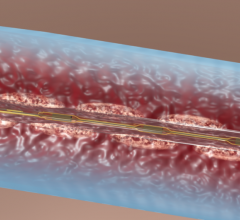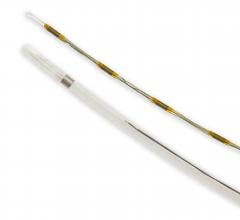
August 12, 2015 — The National Institute for Health and Care Excellence (NICE) has recommended a new treatment to help patients suffering from blood clots in the legs and lungs.
NICE has issued a Final Appraisal Determination (FAD) for Lixiana (edoxaban) for the treatment and prevention of recurrent deep vein thrombosis (DVT) and pulmonary embolism (PE) in adults.
The draft guidance states: "Edoxaban is recommended, within its marketing authorization, as an option for treating and for preventing recurrent deep vein thrombosis and pulmonary embolism in adults."
It adds: "The Committee concluded that edoxaban could be recommended as a cost-effective use of NHS [National Health Service] resources."
Edoxaban, made by the pharmaceutical company Daiichi Sankyo, is one of the class of blood-thinning drugs known as non-VKA oral anticoagulants (NOACs). The drugs are used as an alternative to warfarin, which has been widely used for more than 50 years but requires frequent monitoring to ensure the drug is working properly and is also associated with many food or drug interactions.
After a five-day lead in with heparin treatment, edoxaban can be taken once a day and was shown to have comparable efficacy to warfarin but with a more favorable safety profile.
The term venous thromboembolism (VTE) is used to cover both deep vein thrombosis and the potentially fatal pulmonary embolism.
Figures from NICE say there are around 83,500 new cases of VTE each year in England. This equates to one in 500 of the population (200 per 100,000 of the population).
In addition to new annual cases, there is another group of patients needing long-term treatment. This number is around 42,000. Therefore, said NICE, the annual number of patients receiving VTE treatment in England stands at some 125,500.
The NICE approval comes shortly after edoxaban received European marketing authorization for two indications:
- Treatment of DVT and PE, and prevention of recurrent DVT and PE in adults; and
- Prevention of stroke and systemic embolism in adult patients with non-valvular atrial fibrillation (NVAF) with one or more risk factors, such as congestive heart failure, hypertension, age ≥ 75 years, diabetes mellitus, prior stroke or transient ischaemic attack (TIA).
The NICE FAD called VTE "devastating" - and said some patients found the repeated checks needed with warfarin difficult.
"The Committee considered the experience of people with VTE. It noted submissions from clinical and patient experts which stated that the impact of a deep vein thrombosis or pulmonary embolism can be devastating, with patients often hospitalized, restricted in movement and unable to continue with previous activities. When recovering from VTE, patients may need further treatment and monitoring.
"It heard from the patient and clinical experts that the need for International Normalized Ratio (INR) checks when taking warfarin represents a major disadvantage, and the most important issue for patients is to have an effective treatment which minimizes disruption to their day-to-day lives."
Alexander Cohen, M.D., consultant vascular physician from Guy's and St Thomas' Hospitals, Kings College London, who has researched edoxaban for venous thromboembolism, welcomed an additional resource to tackle the condition.
"No two patients are identical and what suits one may not suit another. Venous thromboembolism has a high rate of recurrence, which can be fatal. We need more tools to protect patients from a second incident, and edoxaban will be of great use to doctors to help tailor treatments to specific patients."
The key clinical evidence for edoxaban in VTE came from a global phase 3 study, called Hokusai VTE, which investigated the efficacy and safety of edoxaban compared with warfarin in 8,292 patients with either acute symptomatic deep vein thrombosis, pulmonary embolism or both. This represents the largest single study carried out to date with a NOAC in this indication.
For more information: www.daiichisankyo.com


 November 21, 2022
November 21, 2022 



